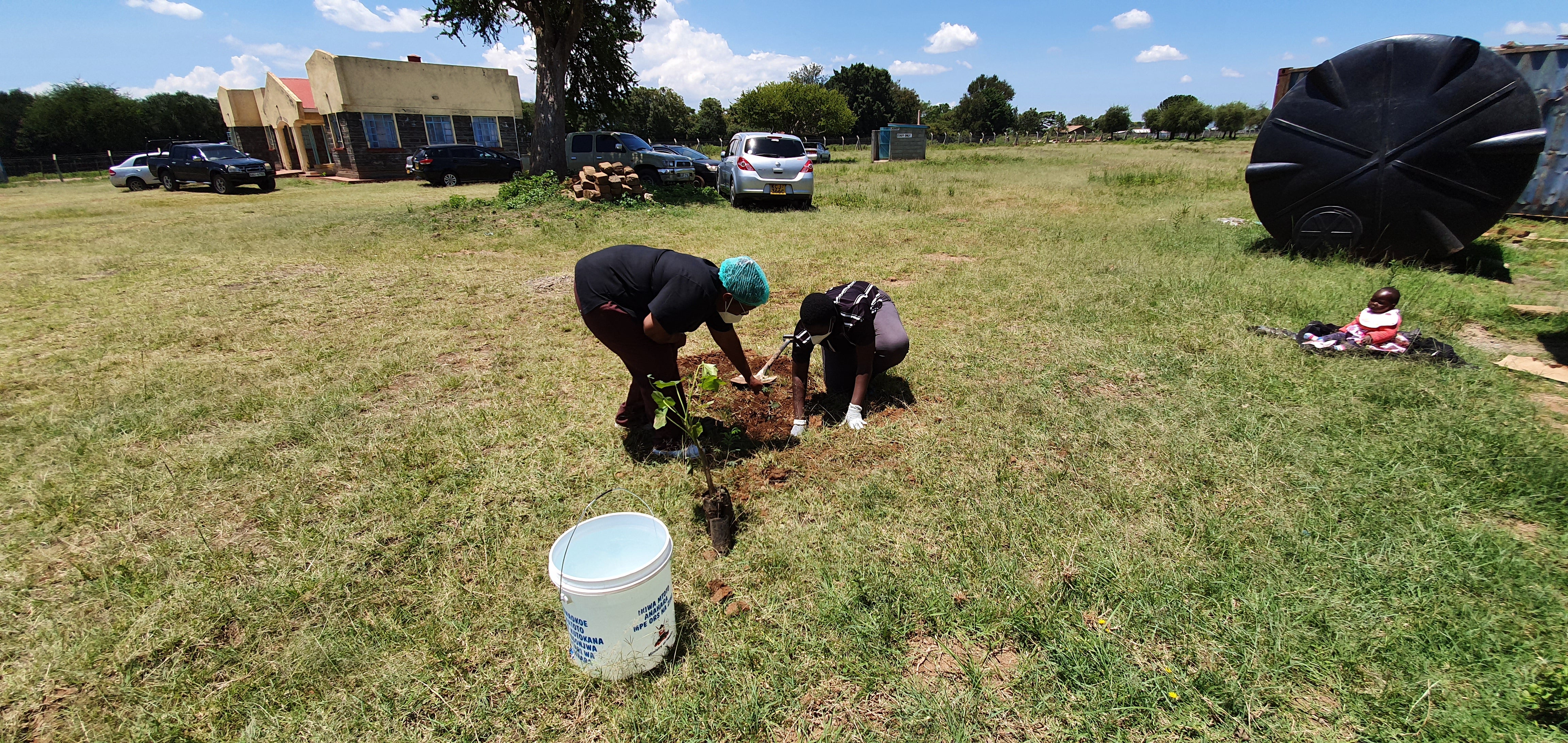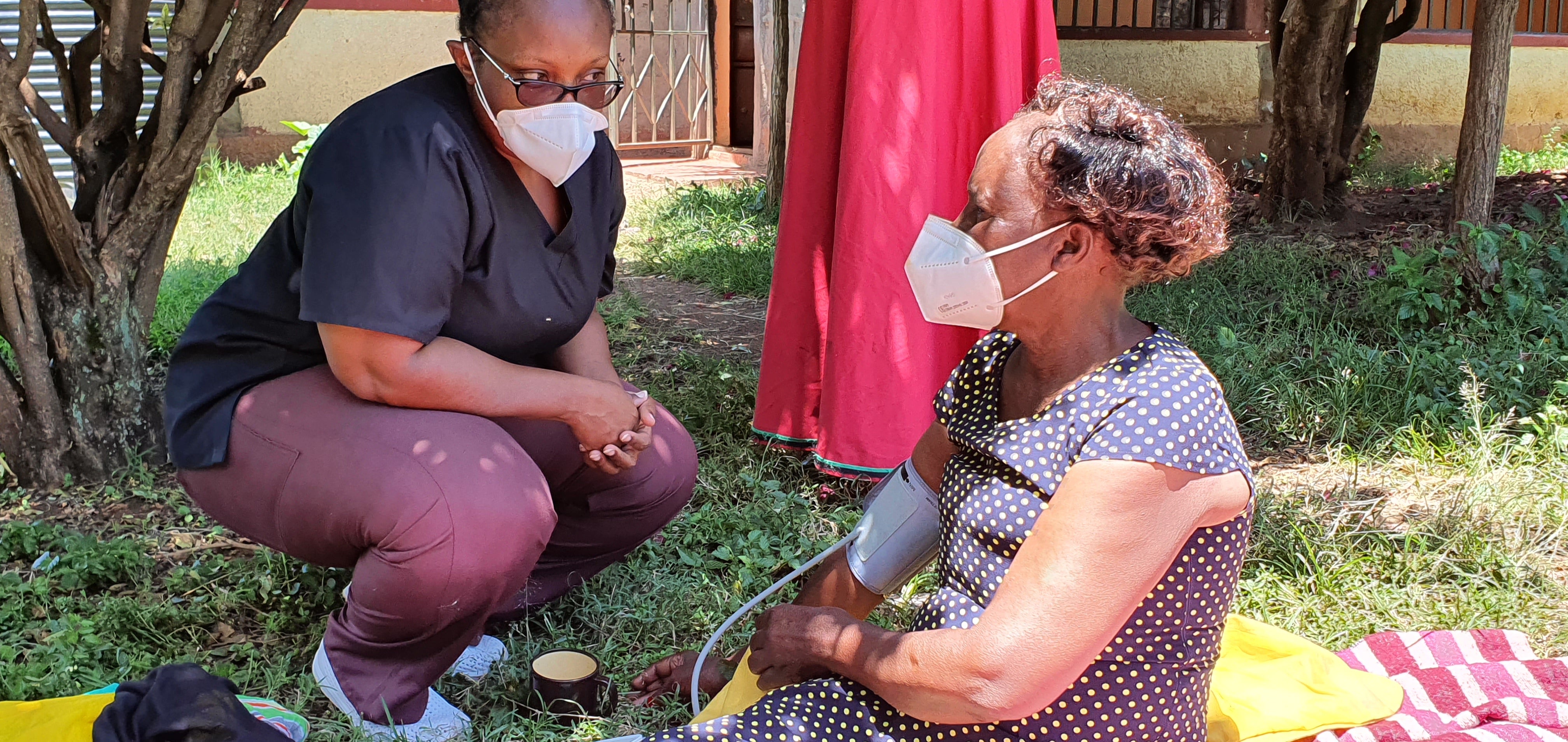Primary Sources
Planting Ideas for a Reimagined PHC System in Rural Kenya
As a health advocate and primary care physician leader in my community of Baringo, witnessing COVID-19 unfold around the world has pushed me to reimagine how the health system is structured, how I care for my community here at home, and the integration between the two.
A few years back when Ebola struck Uganda, the government set out to train all hospital staff situated between Nairobi and the Ugandan border on response to pandemics and provided stocks of personal protective equipment. Our hospital participated in the training and came together to implement Infection Prevention Control Measures, and also formed a committee that did regular trainings and department checks on adherence. In January of this year, when the World Health Organization sounded the alarm about COVID-19, I was confident we could employ these same lessons and strategies to overcome this new threat.
Our region is not new to infectious diseases – from cholera to Rift Valley Fever and tuberculosis. We have a strong disease surveillance team but we knew that limited knowledge regarding treatment of COVID-19 could wreak havoc on our population. In early March, we organized an online webinar with the WHO Headquarters, during which we learned more details about the virus and discussed interventions we could take to keep ourselves and our patients safe. The interventions WHO suggested were strengthening surveillance, handwashing, distancing and quarantine measures in addition to re-structuring our clinic operations.
At the start of social distancing and quarantine restrictions, there was fear and stigma within the community, leading to a few violent incidences in some areas. We quickly developed a Community COVID-19 working group on WhatsApp that included local religious leaders, chiefs, community elders, and the police to enable positive messaging, answer questions, debunk myths spreading in the community, and provide guidance on what measures to relax or enhance. Coordinating with trusted community members was crucial to ensuring truthful information was shared and that peace was maintained.
To our community, social distancing and quarantine in a rural area may seem daunting and “unAfrican,” but through community dialogue we experienced a change in my town. The population I serve predominately work as farmers on their land, so unlike the crowded conditions of the city with large concrete structures with multiple dwellings, many instead live in small, segregated homes and huts scattered about with plenty of space (though there are also a number of informal settlements where space and structures for home isolation do not exist). Earlier when the pandemic was unfolding in Kenya, if a new traveler was seen in the town, locals quickly contacted the clinic and the individuals were requested to quarantine for 14 days. If the quarantined individual felt ill, they could contact the clinic by phone, and our surveillance and laboratory team would test them at their home. This network of community accountability, engagement with local leaders and trust of the healthcare system enabled quarantine measures to be followed. Prevention and promotion at the community level along with the strict mitigation strategies on curfew and transport restrictions set out by the government kept our region COVID-19 free for five months.
In July 2020, the government relaxed restrictions and with that many relaxed their hygiene and physical distancing practices – and as a result we identified our first COVID-19 case at the end of July. While our team continues working hard to engage the community, cases have increased, requiring a hospital 40 km away to be repurposed to the care of COVID patients. The delivering mothers and essential health care that was previously provided at that facility have now been diverted to a nearby mission hospital, and I now must leave our local clinic two days a week to care for patients in this hospital where we have recorded several success stories. We have continued working with the Whatsapp working group, emphasizing that the region has just started seeing community spread of cases, and we cannot yet relax. As a county I would say we are at ground zero, and have not yet started to “bend the curve.”
Community Health Workers (CHWs) have been key in fostering community engagement and amplifying positive messaging. The CHWs work through our community focal point at the hospital. One of the biggest challenges, however, also involves the community. Stigma around COVID-19 is great. Even as people gather and forget social distancing guidelines at times, they are fearful of engaging with persons who have recovered from COVID-19 and health workers working in COVID-19 centers.
Like all other countries, Kenya faced challenges and we had very little PPE, but soon local industries started production and the cost of PPE dropped to an affordable level. We were lucky to get several donations from our local leaders, women’s groups and lately the Kenya National COVID fund provides monthly PPE to ensure workers would are protected.

As patients return home, the stigma unfortunately continues. Neighbors are fearful and hostile to patients returning to their original residence. I have set aside a day each week to work with my team and do home visits with recovering patients, where I can help them settle in and speak with their neighbors in nearby homes, and explain they won’t get infected by someone who has already recovered, show them the graph of recovery, and encourage them to support their neighbors reintegration in the community. Many of these people are clients in my local clinic, and so are more accepting when I explain, “I am caring for patients with COVID yet you don’t reject me as your provider, so why reject others recovering from COVID”?

The mandated shutdown of public transportation, heavy seasonal rainfall, and stagnated economy have created significant logistical and financial challenges for patients seeking service at our clinic. We have expanded care provided by phone where possible and have relied on CHWs to deliver medicines to those who could not access care otherwise.
COVID-19 has shown me that the greatest tool as a primary care physician is to empower the population we serve. We need to support them in both following public health measures to fight the virus, and simultaneously fighting the stigma for those who have recovered. I have also learned that there is no one-size-fits-all solution and that it is important to get creative to build solutions that meet the needs of each particular community. Whether that means working closely with religious leaders, or using the opportunity to detect other diseases, my village has come together in the face of this pandemic and will continue to fight whatever may lay ahead.
By Dr. Joy Mugambi, Consultant Family Physician, Baringo; Secretary General, WONCA Africa Region; Vice Chair, Kenya Association of Family Physicians
